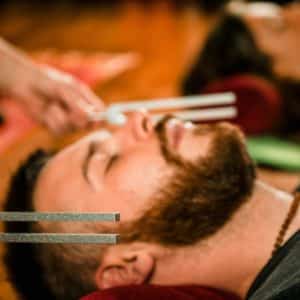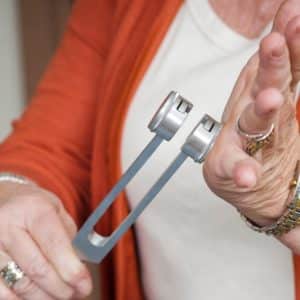Different Tuning Fork Uses
Different Tuning Fork Uses
Different Tuning Fork Uses
A tuning fork is a two-pronged metal device that is frequently used to tune musical instruments. They are traditionally made of metal and have two prongs that are perpendicular to each other. It works by generating sound waves that are in tune with the instrument’s natural sound when the prongs are set in vibration by a striking force, such as a finger or mallet. But, music isn’t the only place where tuning forks can come in handy or have positive effects. Learn more about their uses from Tools for Wellness and buy one for yourself today!

Music
Let’s start with the most basic and popular use for tuning forks. If you have spent any significant time around musicians, you are likely to have seen one or two of these lying around. They are used by musicians as a reference for accurate pitch. Tuning forks provide a pure tone and are easy to use so it is easy for the artist to get the right pitch. Conductors often use tuning forks with acapella groups for just this purpose. They were used traditionally as a way to help tune a piano, though technology has made them slightly obsolete in recent years.

Sound Therapy
A popular, new-age use for tuning forks is in sound therapy. It is a form of treatment that utilizes sound and vibration in order to help patients recover. It can be largely beneficial for those who suffer from mental illnesses like depression anxiety, and post-traumatic stress disorder. It’s also used to help those afflicted with degenerative brain diseases like Alzheimer’s and dementia in memory recovery. Tuning forks are useful in all of these cases because the treatment is all about the positive effects of sound and vibration on the body and mind.

Medical Uses
It may seem odd that professional medical providers would find a use for a tuning fork of all things. But, it truly is a versatile tool and has proved to be useful in the field of healthcare. One of the most prominent uses for tuning forks in medicine is with people that are experiencing hearing loss. A tuning fork is held up to the patient’s ear and doctors observe the length of time that they are able to hear the tone. This helps doctors better understand the degree of severity of their patients’ hearing loss and is known as a Rinne test. If the patient can’t hear it at all or only feels vibrations on areas surrounding their ear, there is a problem. They can also be used to determine if a bone is fractured by the way a patient reacts when a tuning fork is held to the area

Watches & Clocks
Modern quartz clocks and watches, which is the timekeeping element that keeps them both ticking, there is a small quartz crystal shaped like a tiny tuning fork. When electricity is applied to the crystal, the prongs bend back and forth rapidly. The crystal always vibrates at the same frequency and is used to ensure that the watch measures a second at the same rate all of the time. Some of the most sought after (and most expensive) clocks and watches in the world involve the use of a quartz tuning fork.
Tuning forks are truly a one-of-a-kind device. They have so many uses in all areas of life, many that we didn’t even mention in this blog. Next time you use music to motivate you or help you calm your mind, see a quartz watch in public or at a store, or go to the doctor for a hearing test. Think about how important tuning forks are outside of music. If you are interested in purchasing one for yourself, check out the selection from Tools for Wellness. Shop with us today!
